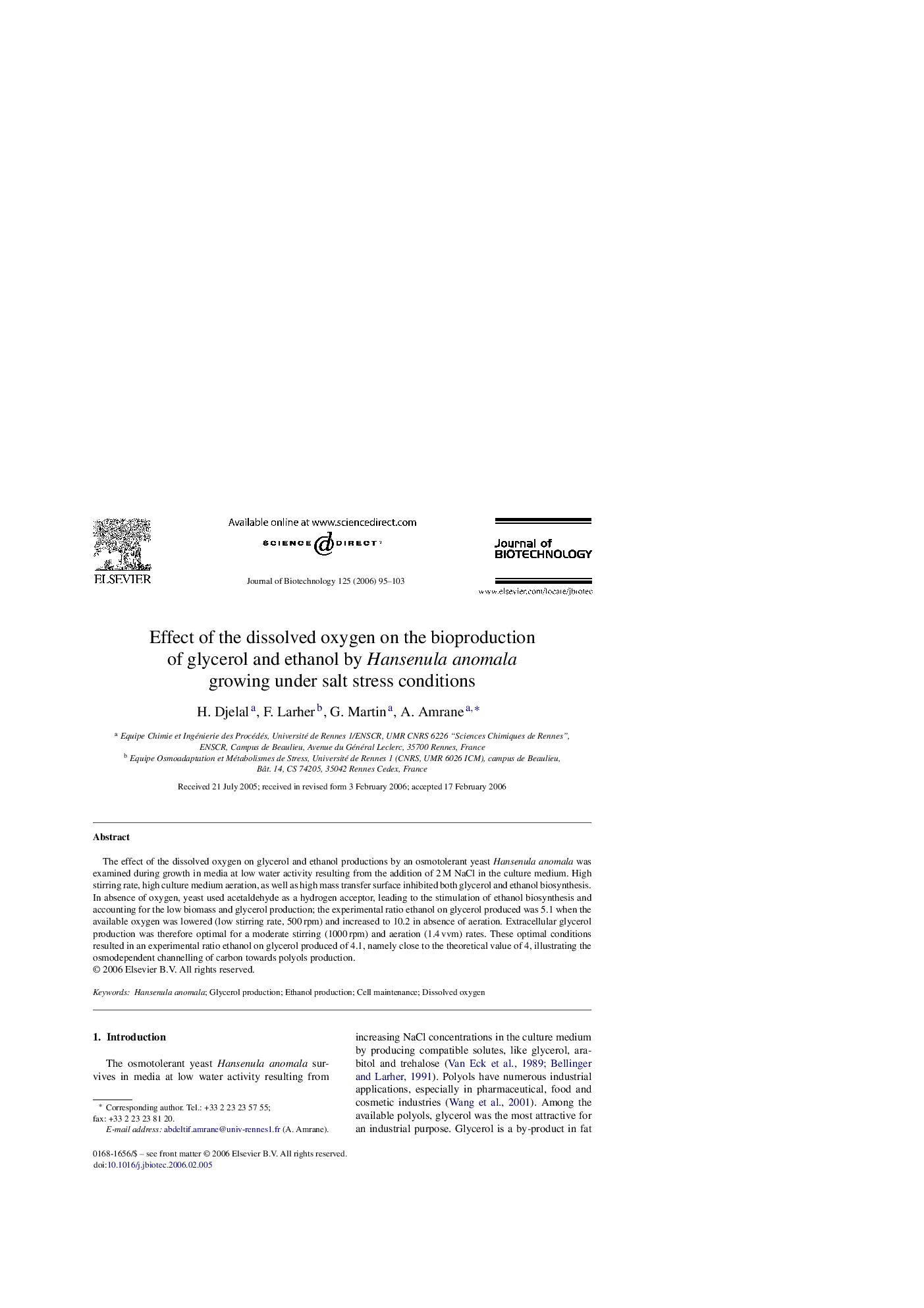| Article ID | Journal | Published Year | Pages | File Type |
|---|---|---|---|---|
| 25240 | Journal of Biotechnology | 2006 | 9 Pages |
The effect of the dissolved oxygen on glycerol and ethanol productions by an osmotolerant yeast Hansenula anomala was examined during growth in media at low water activity resulting from the addition of 2 M NaCl in the culture medium. High stirring rate, high culture medium aeration, as well as high mass transfer surface inhibited both glycerol and ethanol biosynthesis. In absence of oxygen, yeast used acetaldehyde as a hydrogen acceptor, leading to the stimulation of ethanol biosynthesis and accounting for the low biomass and glycerol production; the experimental ratio ethanol on glycerol produced was 5.1 when the available oxygen was lowered (low stirring rate, 500 rpm) and increased to 10.2 in absence of aeration. Extracellular glycerol production was therefore optimal for a moderate stirring (1000 rpm) and aeration (1.4 vvm) rates. These optimal conditions resulted in an experimental ratio ethanol on glycerol produced of 4.1, namely close to the theoretical value of 4, illustrating the osmodependent channelling of carbon towards polyols production.
